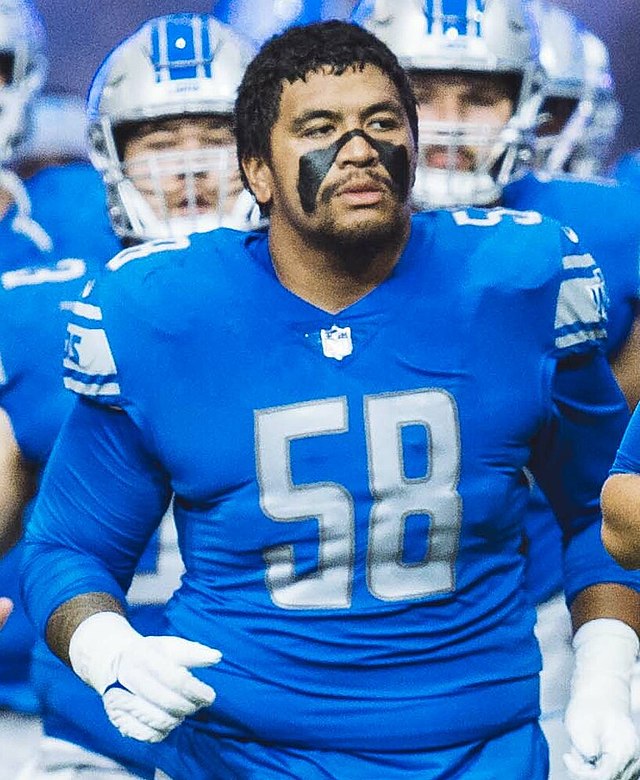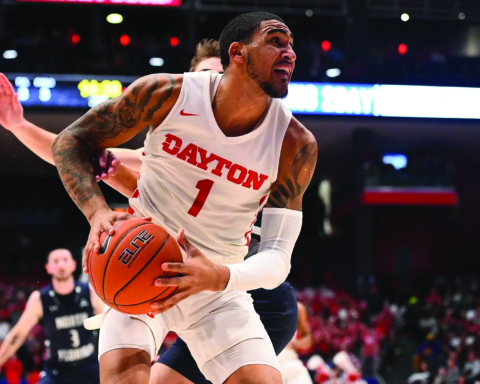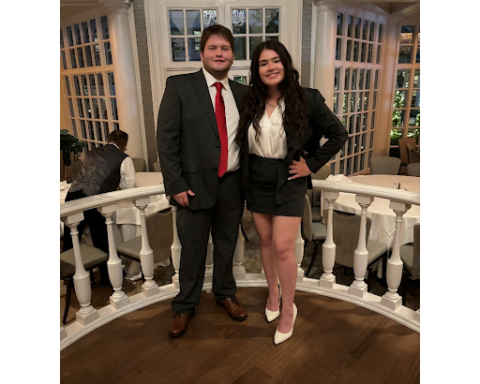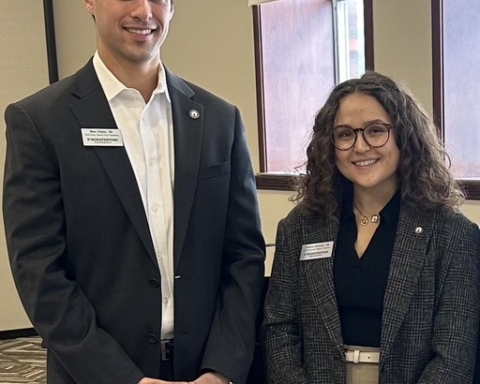BY: COLIN BISH, STAFF WRITER
Photo courtesy of Wikimedia Commons
80. Offensive tackle Penei Sewell, Oregon
Born in the small village of Malaeimi in American Samoa, Penei Sewell’s family moved to St. George, Utah, when Penei was 12 years old. He would attend Desert Hills High School before committing to play at the University of Oregon. Sewell burst onto the scene, starting seven games before missing six with an ankle injury. His short tenure would set the tone for his sophomore year, where he wrecked opposing linemen en route to one of the best seasons by a tackle in recent college football history. In 2019, Sewell was named a unanimous All-American while winning the Morris and Outland trophies, leading the Ducks to a Pac-12 Championship and Rose Bowl victory over Wisconsin. He opted out of the 2020 season due to the COVID-19 pandemic and later declared for the 2021 NFL Draft, where he was selected by the Detroit Lions seventh overall. Although his time in college football was brief, Sewell will be one of the fiercest linemen to ever play college football.
79. Safety Grant Delpit, LSU
Life dealt a tough hand to young Grant Delpit, whose family was forced out of his hometown, New Orleans, after Hurricane Katrina. Delpit attended St. Thomas High in Houston for two years before transferring to Lamar High School for his junior year. Delpit transferred to the highly touted IMG Academy for his senior season, hoping to get more recognition. This worked out, as Delpit committed to play for the LSU Tigers, returning to his home state. Delpit played a lot as a freshman in 2017, showing glimmering promise heading into his sophomore year. He more than delivered, totaling 74 tackles, 10 for a loss, five sacks, five interceptions and nine passes defended. Delpit returned for his junior year, and though his numbers declined, he remained a touted member of an LSU team that steamrolled its way to a national title. After leaving college football with a ring and the 2019 Jim Thorpe Award, Delpit declared for the 2020 NFL Draft, where the Cleveland Browns selected him in the second round.
78. Running back Ezekiel Elliott, Ohio State
Born in Alton, Illinois, to a dominantly athletic family, Elliott attended John Burroughs School in Ladue, Missouri, where he excelled at football and track and field. Ranked as the ninth-best running back in the nation by Scout.com, Elliott committed to Ohio State over his parents’ alma mater, Missouri. Elliott backed up Carlos Hyde, who had mainly played special teams before getting his shot as the starter in 2014. Then, Elliott went on one of the greatest postseason runs by any halfback, college or professional. The Buckeyes’ run started by dismantling the Wisconsin Badgers 59-0 to win the Big Ten title, where Elliott ran the ball 20 times for 220 yards and two touchdowns. Ohio State would make the inaugural College Football Playoff, where Elliott led them to a dramatic 42-35 win over Alabama in the Sugar Bowl. Elliott added another 20 carries for 230 yards and two touchdowns, which included an 85-yard dash in the fourth quarter to clinch the game. Elliott capped his miraculous run with a 246-yard, four-touchdown performance against Oregon to win the national championship. Elliott returned to Ohio State for his junior year with aspirations to go back-to-back, but a late-season loss to Michigan State bounced Ohio State from the Playoff race. Elliott declared for the 2016 NFL Draft not long after, leaving Columbus with a legacy on par with legends like Archie Griffin and Eddie George. The Dallas Cowboys took Elliott fourth overall, where he would win Offensive Rookie of the Year and had many successful seasons before injuries derailed his career.
77. Offensive tackle Gabe Carimi, Wisconsin
At 6’5” and 220 pounds as a freshman, Carimi had unbelievable athleticism and flexibility for one his size. Carimi was ranked a top 50 offensive tackle by Rivals.com in the 2006 class, eventually committing to Wisconsin. Not only did Carimi shift from the right side of the offensive line to the left, he would be replacing a future Hall of Famer in Joe Thomas. Yet Carimi excelled. He was named a second-team Freshman All-American in 2007 and continued his dominance as a sophomore in 2008. In his junior year, people really started honing in on Carimi’s skill, being named to the All-Big Ten team with his elite pass protection and massive size. Carimi ended his Badgers tenure with a bang, being named a unanimous All-American and leading Wisconsin to a Rose Bowl berth. He also won the Outland Trophy, the second Badger to win the award, the first being Thomas. The Chicago Bears took Carimi 29th in the 2011 NFL Draft, hoping to fix their offensive line problems. Unfortunately, Carimi suffered a season-ending knee injury in Week 2 against the New Orleans Saints. He never captured the same prowess, soon retiring a few years later. His injury came during the height of Bountygate, leading many to speculate Carimi was one of the unfortunate victims. We will never know, but what could have been should not have overshadowed Carimi’s dominance for years in Madison.
76. Tight end Mark Andrews, Oklahoma
Though Andrews fell under scrutiny after his massive dropped pass against the Bills, one bad game shouldn’t overshadow his skill or legacy. Playing for Desert Mountain High in his hometown of Scottsdale, Arizona, Andrews ended his high school career as the all-time state leader in receptions. He would commit to Oklahoma, redshirting his freshman year before shifting to tight end from wide receiver. Andrews showed promise for the Big-12 champion Sooners, catching 19 passes and seven of them for touchdowns. He saw more action in 2016, catching 31 passes for 489 yards and another seven touchdowns. Everything came together in his redshirt junior year, where he caught 62 passes for 958 yards and eight touchdowns. Andrews was named a unanimous All-American and won the John Mackey Award, given to the nation’s best tight end. Andrews declared for the 2018 NFL Draft, where the Baltimore Ravens selected him in the third round. Regardless of his misplay, Andrews is not just the best tight end in Oklahoma histor, but one of the best tight ends today and in college football history.
75. Cornerback Desmond King, Iowa
One of the more underrated defensive backs in college football history, King showed signs of stardom for East English Village Prep in Detroit. He set a Michigan high school record of 29 career interceptions and a school record in rushing yards before committing to play at Iowa. As a true freshman in 2013, King started 12 of the 13 games he played, totaling 69 tackles and eight pass deflections. He became a full-time starter his sophomore year, notching three picks and five pass deflections. Then came his junior year, which put King on the radar of Big Ten opponents. King accumulated 72 tackles, grabbed eight interceptions and added 13 pass deflections. His performance won him the 2015 Jim Thorpe trophy and a unanimous All-America selection, subsequently leading the Hawkeyes to an undefeated regular season. However, Iowa came short of a CFP berth after a nail-biter loss to Michigan State and ended the season with a blowout loss to Stanford. King returned for his season and had another great year, notching 58 tackles, 3.5 for loss, three interceptions and seven pass deflections. King was taken by the Los Angeles Chargers in the fifth round of the 2017 NFL Draft, finding early success after being named an All-Pro at defensive back his second season. Unfortunately, King never captured that same level of success in the NFL but left a lasting legacy among the greatest Iowa defenders in school history.
74. Quarterback Denard Robinson, Michigan
One of the most undoubtedly exciting players in college football history, Robinson electrified headlines beyond his electric runs. He did it all without tying his shoelaces. Since pee-wee, Robinson refused to tie his shoes, but the wardrobe deficiency didn’t slow him down. After an electric high school career in Deerfield Beach, Florida, Robinson signed to play with Michigan after they saw his ability as a quarterback. After primarily playing as a rushing quarterback in 2009, coach Rich Rodriguez let Robinson loose in the 2010 season. In just his second career start, Robinson exploded for 502 total yards (the rest of the team had 30) in a 28-24 win over Notre Dame. Though he went on to have an incredible season, rushing for 1702 yards, passing for 2570 and scoring 32 total touchdowns, the Wolverines as a team disappointed. Robinson remained with the team when Rodriguez was fired and replaced by Brady Hoke. But the coaching change didn’t slow down Robinson, passing for 2173 yards and 20 touchdowns and rushing for another 1176 yards and 16 touchdowns. Michigan rebounded greatly under Hoke, going 11-2 including a Sugar Bowl win over Virginia Tech. In his final season at Michigan, Robinson battled with injuries but still put up 1266 rushing yards and seven touchdowns on 7.2 yards per carry. Though Robinson never found much success in the NFL, “Shoelace,” as he was widely known, ended his Michigan career with over 10,000 all-purpose yards and was the final NCAA Football video game cover athlete before its eventual revival in 2024. The latter shows how widely beloved Robinson was among college football fans.
73. Offensive tackle Spencer Drango, Baylor
Drango’s college performance was so dominant that it may have kickstarted Pro Football Focus’ mainstream recognition for tracking non-number stats. Drango was ranked a four-star recruit by Rivals.com, eventually committing to Baylor. Drango redshirted before taking over for previously mentioned Cyril Richardson at left tackle in 2012, eventually being named a Freshman All-American. Unfortunately, Drango underwent back surgery for a ruptured disk in his sophomore season, casting doubt as to whether he would ever play again. Against all odds, Drango returned to the Bears in 2014, being named a consensus All-American, a first-team All-Big-12 selection, and the Big 12 Offensive Linemen of the Year. Drango won the same awards again in his senior year, but PFF’s deeper context put his incredible final season into perspective. Drango allowed just three quarterback hurries and a single quarterback hit all season, giving him an astounding 99.2 pass-blocking efficiency grade. Despite all of the accolades, Drango was selected in the fifth round by the Cleveland Browns and could never find his footing, even with getting an opportunity to sub in for an injured Joe Thomas.
72. Tight end Evan Engram, Ole Miss
Though Engram showed promise at tight end for Hillgrove High in Powder Springs, Georgia, he was not highly recruited before committing to the University of Mississippi. But after arriving in Oxford, it became abundantly clear that the Rebels found a diamond in the rough. Engram showed promise his freshman year before showing out in 2014, catching 38 passes for 662 yards and two touchdowns. His best performance came against Dak Prescott-led Mississippi State, catching five passes for 176 yards. However, his production dipped the following season, catching another 38 passes but only for 464 yards. It was in 2016 that Engram ended his Rebels career on the highest of notes. He caught 66 passes for 926 yards and eight touchdowns, being named first-team All-SEC, a first-team national All-American and winning the Conerly trophy as the best college football player in Mississippi. Engram left Ole Miss with 162 catches, 2320 receiving yards and 15 touchdowns. He would go on to be drafted by the New York Giants in the first round of the 2017 NFL Draft, playing there for five years before joining the Jacksonville Jaguars in 2022, where he remains today.
71. Linebacker Anthony Barr, UCLA
Coming out of high school, Barr was a Swiss army knife in every sense of the word. He attended Loyola High in Los Angeles, where he was primarily recruited as a running back. Barr would attend UCLA and stay in the backfield, but never found much success. Barr started 12 games in just two years and rushed the ball 15 times. Barr mulled quitting football but decided on switching positions to get to the backfield the hard way: as a linebacker. And the switch more than paid off; he amassed 83 tackles, 21.5 for loss, 13.5 sacks and four forced fumbles. Some of his best performances came in the season’s last games, like his 8-tackle, 1.5-sack performance in the conference championship game against Stanford. Although touted as a first-round draft pick in the 2013 NFL Draft, Barr elected to return to UCLA for his senior year. He put up yet another dominant season, making 66 tackles, 20 for loss, 10.5 sacks and six forced fumbles with four recoveries. Barr turned perennial disaster into pure dominance, being named a consensus All-American, two-time first-team Pac-12 and winning the 2013 Lott IMPACT Trophy. The Minnesota Vikings took Barr ninth overall in the 2014 NFL Draft, where he had an incredible start to his career. He made four consecutive Pro Bowls from 2015 to 2018, and though his NFL career petered out, Barr remains one of the greatest defensive players in UCLA’s acclaimed history.








